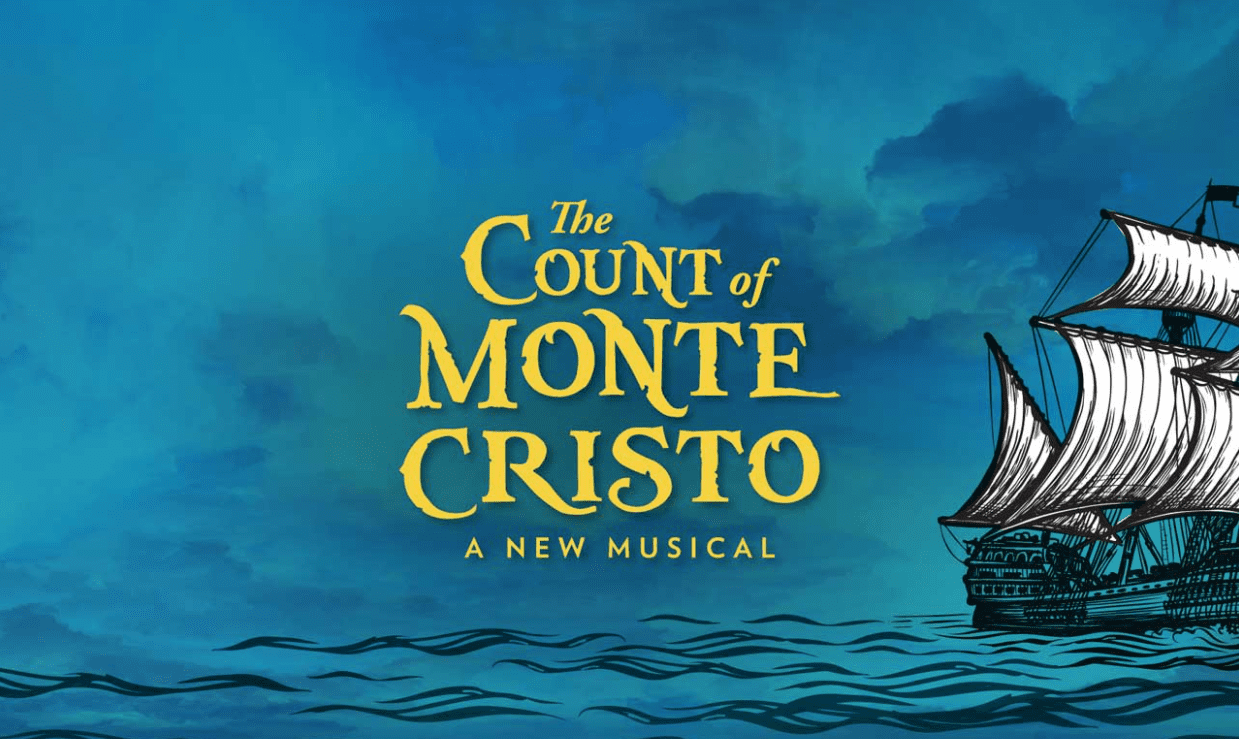IVINS — Tuacahn’s summer production of The Count of Monte Cristo features live animals, a huge outdoor stage, and super performances.

The musical, with book and lyrics by Jack Murphy, tells the fictional tale of Edmond Dantes, a 19th century Frenchman who is ripped from his wife’s bosom on their wedding night (and what a night it was according to this production), framed by villains, and sent to prison on spurious charges. David Toole’s Edmond was meek, humble and a bit naïve before the big house showed him the ways of the world. Toole’s range during his character’s journey from a humble, likable sailor to a fearsome tycoon was impressive, and Toole’s singing a pure delight. Matching him pace for pace was Caitlyn Caughell as Mercedes, a woman who never lets her love fade, even in the clutches of the man who framed her love.
The show features three villains led by Nathaniel Hackmann as Fernand Mondego, a man so driven by avarice, that the costumer (Leon Wiebers) dressed him in green throughout. Hackman’s eye-popping bio includes leading Broadway roles in Jekyll and Hyde, The Hunchback of Notre Dame, and Les Misérables. As Fernand Mondego, Hackmann was creepy, cringey, and human in the role. Hackmann portrayed Mondego with great restraint; there was no sneering or snarling, but rather a relatable, selfish man who believes in using and discarding others when they’ve served his purpose.
Leading roles were played by equity actors, and the cast was strong across the board. Among the supporting cast, Ashley Agrusa stood out in particular. Her expressions and movements as a carnival clown were fabulous—she displayed a delightful mixture of joy and tumbling abilities.
One of the most magnificent aspects of the production was scenic designer Brad Shelton’s use of space. In addition to Tuacahn’s massive outdoor stage, the production had a second stage a few hundred feet back on a hill as a prison tower. I’ve never seen a set up quite like it, and the timing between the two stages was impeccable. The main stage was also flanked by fabricated red rock towers with stone arches that looked so much like the red rock formations behind the stage, I wondered if they were real.
Lighting was another unique aspect of the show. Instead of rigs and spotlights in front of the actors, there were four spotlight operators perched like snipers surrounding the stage, and lighting from the sides and rear. The busy spotlight crew, working off Nathan W. Scheuer’s lighting design, did commendable work.
The live horses and goats were entertaining, and there was plenty to enjoy in Wiebers’ costume design. Not only were Edmond and Mercedes’ complimentary gold costumes for the ball scene lovely, they suggested a meeting of the fates (or is it stars in their case?) after 20 years apart.
Frank Wildhorn’s score gave the leading actors opportunities to deliver soaring, soulful vocals—and the cast took full advantage of it. The audience particularly appreciated Caughell’s performance of the showstoppers, “When the World Was Mine,” and, “All This Time.” While the production executed the music well, I must say I’m not a Wildhorn fan (he also scored The Scarlet Pimpernel and Jekyll & Hyde). As a whole, the score felt dour and plodding. “Too many ballads!” commented my theater educator friend who used to teach at Tuacahn. The music and lyrics of, “Ah, Women,” felt very dated and slow—like something out of, “Seven Brides for Seven Brothers,” from the 50s, not from 2009. The pirate number, “Truth or Dare,” was also a little unintentionally nauseating, and Gail Bennett’s pirate queen Louisa Vampa was too broad compared to other cast members’ performances.
Before the show, director Scott S. Anderson took the stage to announce that due to Southern Utah’s unusual rain, they were only able to do two of five rehearsals this week, priming the audience for potential technical difficulties. There were some, but the only one that really stuck out was 30-60 seconds of dead stage at one point. When the play started again, Edmond rode onstage atop a horse, making the delay fairly understandable.
The show has an interesting history. Despite its creators’ impressive track record, it never ran on Broadway, instead running internationally for six years before arriving in the U.S. for its debut at Brigham Young University in 2015. Wildhorn decided to debut it at the Provo, Utah school after being blown away by the students’ talent while he was conducting master classes. Its U.S. professional debut was also in Utah, at Pioneer Theatre Company in Salt Lake City.
The Count of Monte Cristo has some great positive messages. The first message is the important one of forgiveness and letting vengeance go. Unfortunately, Edmond spends much more time fulfilling the later than the former onstage. It’s too bad forgiveness arrives at the last second, only after a wake of bodies has been left in the name of vengeance. It feels a little like Darth Vader’s deathbed repentance.
Another positive message from which we can all learn is how the wizened Abbe Farria (Bryan Dobson) shared knowledge and skills with Edmond in prison, and how Edmond voraciously devoured that knowledge. Being an effective mentor or student who is a willing and eager vessel for education is a tremendous way to live.
[box]The Count of Monte Cristo plays at Tuacahn’s Outdoor Ampitheatre (1100 Tuacahn Dr, Ivins) on various days Monday-Saturday through October 21, 2021, between 7:30-8:30 PM. Tickets are $32-$113. For more information, please visit their website.[/box]

